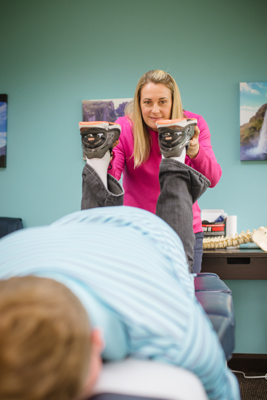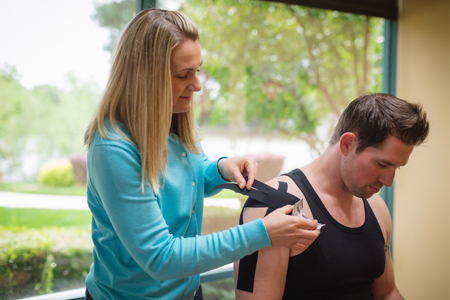Activator Methods®
We use one of the most popular “low force” chiropractic techniques in the world.

We use one of the most popular “low force” chiropractic techniques in the world.

We begin by analyzing how well your spine moves with specific ranges of motion. While you’re lying face down, we’ll evaluate the length of your legs. This simple procedure can reveal significant differences in leg lengths and subsequent palpation can confirm fixations or subluxations in the spine.
This time-tested protocol tells us if subluxations exist and their location. It also helps us know when to adjust and when not to adjust.
The Activator Methods® Adjusting Instrument is a handheld spring-loaded tool that delivers a consistent low-force, high-speed thrust.
Because it’s many times faster than adjustments delivered by hand, the body rarely tightens to resist, making adjustments comfortable and effective. It’s also helpful for adjusting elbows, wrists, knees and other joints of the body.
After an examination of your spine with motion palpation and a leg check an imbalance may be identified. A specific, gentle manual thrust will be administered to the fixated joints. The direction, speed, depth and angle that are used is the result of years of experience, and a thorough understanding of spinal mechanics.
While improving spinal biomechanics can reduce nervous system interferences, virtually all joints of the body can be adjusted to help restore proper range of motion.
At Reiner Chiropractic we also use the Webster Protocol for analysis of pelvic and sacral alignment throughout your pregnancy. The Webster protocol is a specific chiropractic analysis and adjustment which reduces interference to the nervous system and balances pelvic muscles and ligaments. This in turn reduces the cause of intra-uterine constraint allowing for the baby to be in the best possible position for birth.
SOT stands for Sacro Occipital Technique, a chiropractic technique designed to help normalize the relationship between the pelvis and the occiput (the bone at the base of your skull). Cranial-Sacral technique similarly balances the nervous system using specific locations along the cranium.
Proper control of every cell and tissue of your body is affected by bones of the skull and tension on your spinal cord. Think of your spinal cord as a string on a harp. Is it flexible and healthy? Or stretched and drawn tight?
We use wedge-shaped devices known as “blocks” to help correct your spine and properly “tune” your nervous system. By knowing exactly where to position these blocks, we use the weight of your body to make corrections, naturally. Cranial-Sacral uses pressure, about the weight of a nickel, at specific locations along your cranium and spine.

Kinesiotape/RockTape®
A special kinesiology/sports tape that provides support while allowing full range of motion. Tape is used to decrease pain, unload tissue via decompression, and provide feedback to your nervous system during the healing process.
Myofascial Release & Foam Rolling
Foam rolling is a form of self-myofascial release that is commonly used to address fascial and muscle tightness, as well as, scar tissue. This localized tightness in the fascia may be impairing proper movement by causing pain or limiting range of motion – or both.